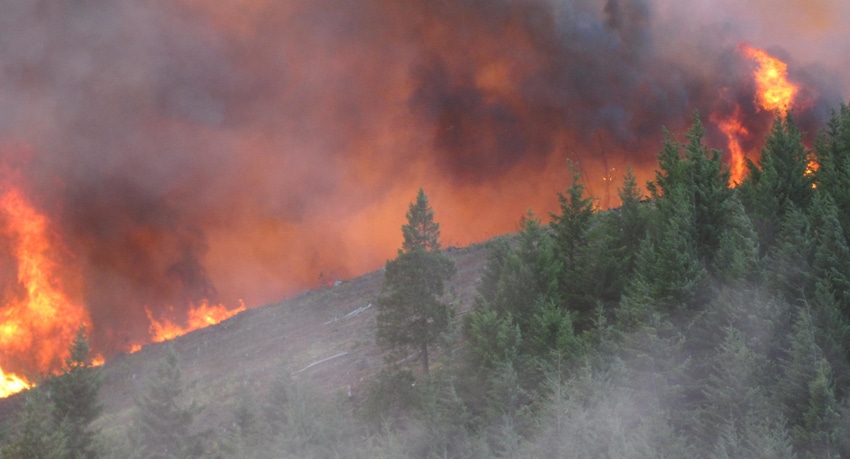May 5, 2021

How to dig fire lines, understand fire behavior, and safely work around fire engines in the forest environment are some of the skills Washington State University undergraduate students will learn in Wildland Fire Ecology and Management, a new course beginning this fall.
The course is designed to prepare young forestry professionals to meet the certification requirements to become entry-level wildland firefighters. This will, in turn, enable them to work on projects that involve the use of prescribed fire to accomplish ecological restoration objectives.
“We are doing a good job educating our students about the science of fire, but there is definitely a need for more hands-on training,” said course-designer Mark Swanson, an associate professor of forestry at WSU. “If we can send our students out of here with a basic knowledge of how fire is suppressed under emergency circumstances and how it’s used as a management tool, then they’re going to be a lot more competitive on the job market.”
Students in Wildland Fire Ecology and Management will start the semester working through online courses on basic fire suppression and fire management techniques put together through the National Fire Academy and the National Wildfire Coordinating Group.
They will also meet for two hours every week with Swanson and other WSU forestry experts to discuss how the skills they are learning can be applied to conservation techniques that utilize fire to thin and maintain the health of many forest types.
Ecology, sociology of fire
Swanson also plans to provide students an in-depth look at the ecology and sociology of fire in the Western United States.
“Unlike the Native Americans, who skillfully used fire as a management tool, we made the mistake of suppressing all fires as we moved into the West,” Swanson said. “Over the last 100 years, this has led to a dangerous situation where an overabundance of forest growth is causing fires to be larger and more severe than ever.”
In mid-October, the class will have the opportunity to get some hands-on experience during a field-day with the Pullman fire department where they will practice digging handlines and interfacing with fire engines as if they were on an actual fire suppression event.
Swanson hopes to round out the class by having students participate in an actual prescribed fire management event after they have become certified as wildland firefighters.
“By using fire in the right way, you can actually create a more fire-safe landscape,” Swanson said. “And that’s what I want to help train our students to do.”
Source: Washington State University, which is solely responsible for the information provided and is wholly owned by the source. Informa Business Media and all its subsidiaries are not responsible for any of the content contained in this information asset.
You May Also Like




